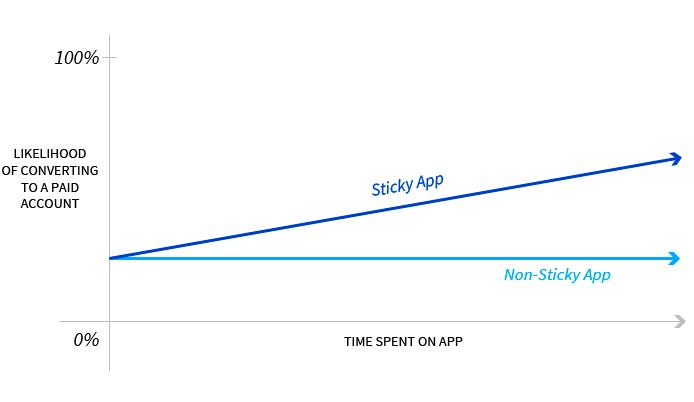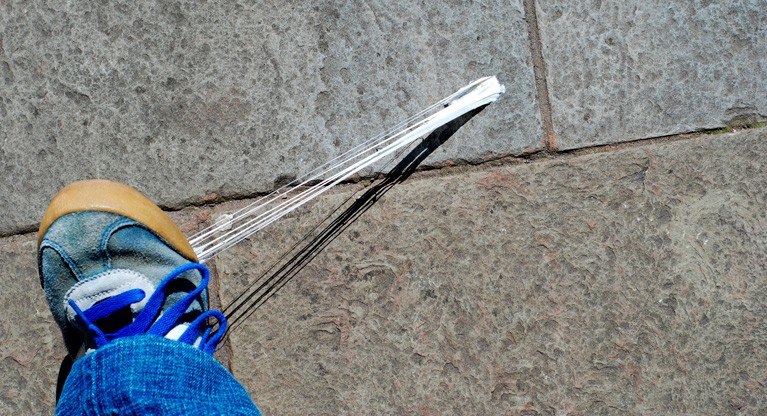by Esteban Sosnik
Dear Esteban,
I’m working on an edtech app, and I keep hearing the same advice: “Focus on building a great product. Don’t worry about monetization yet. The money will come once you get a ton of users.” Do you agree? How do I ensure my product will monetize in schools?
— Worried Monetizer
Dear Worried Monetizer,
In my experience, the advice you’re hearing doesn’t always apply in edtech. I’ve seen that movie before: edtech company builds a product, gives it away to teachers for free, company tries to put up a paywall, teachers don’t want to pay.
So while I agree that building a great product comes first, to me a great product is a product. And stickiness will help you monetize. With a freemium business model , stickiness helps you convert free users into paying customers; with an institutional business model , stickiness helps you retain your contracts and grow through referrals. Monetization is easy compared to stickiness.
In a great post titled “ The Hierarchy of Engagement ,” Sarah Tavel from Greylock (formerly at Pinterest) explains how to design a product so that it has a chance to sustain a billion-dollar business. She highlights the importance of building products with “accruing benefits” for the user as they engage with the product and “mounting losses” for the user if they leave. In other words: the more you use the product, the more valuable it becomes to you, and the more painful it is to quit.

Edtech founders can apply these same principles when designing freemium products. At Reach I see many companies get traction early by distributing free to teachers, but many suffer as soon as they set up paywalls and start trying to monetize at the school level. Teachers don’t have meaningful discretionary budgets and expecting teachers to foot the bill personally for a professional tool is both unpalatable and unlikely to work as a long term strategy. Moving from a teacher-user to a school or district buyer can be tricky, but if you incorporate these “engagement hierarchy” principles in your early product design, your chances of success will be much greater.
Overall, the best way to ensure stickiness is if your product improves the teacher and student experience in the classroom. If a product does this, then teachers will run through walls to evangelize for your product. On a more tactical level, there are many ways to approach improving the stickiness of an edtech product. I’m going to focus on two that I’ve seen recently, and give an example of each.
1. Stickiness because the user is creating or collecting valuable content in a personal, digital space
FreshGrade is an online portfolio where teachers, students, and parents all interact to capture and comment on student’s’ schoolwork. The app also allows teachers to create and grade custom assignments, which are tracked in the tool.
Like many edtech apps, the more a teacher uses FreshGrade in his or her classroom, the more data the app captures and stores about each student. What’s cool about this “data” is that it’s more than a series of scores on different quizzes; it’s a rich history of each student’s work, with photos and videos posted as evidence of progress toward learning goals and student, parent, and teacher comments on the work. FreshGrade describes this as a “portfolio” of your child’s work, and the evocative nature of the photos and notes can make these portfolios as treasured to parents as a photo album or scrapbook of family memories. Think how painful that “data” would be to lose for a teacher or a parent?
On the flip side, the more time the teacher puts into the app — having students take photos of their work, uploading videos, commenting, etc. — the more useful the app becomes in understanding and reporting on a student’s learning. For example, “FreshGrade Moments” is a feature that automatically generates a video slideshow (with music) out of a particular student’s photos. What a powerful thing to include in a report card to a parent!
FreshGrade is converting teachers because of the stickiness of their product. The more you use it, the more you become attached to it.
But here’s the even stickier part: Let’s say a first grade teacher adopts FreshGrade and uses it heavily in their classroom. Next year, all the parents of those first graders are going to expect the second grade teachers to use the product. (Who wants to go back to a quarterly one-page paper report card after getting real-time, multimedia updates on your child’s learning progress??) I think this is one of the main reasons why FreshGrade is able to land district contracts, and why the number of teachers using the product in each district grows rapidly in the first few years after adoption.
2. Stickiness because the app “learns” about the user and gets better at serving the user’s needs over time
AdmitHub uses AI “assistants” (chatbots) to help colleges better support their students. New students, for example, can chat with the assistant, which acts as an on-demand advisor, guiding them step-by-step through the enrollment process, keeping track of their progress, and answering any questions they ask. In a recent pilot with Georgia State University, AdmitHub’s technology made a significant impact on enrollment metrics, including a reduction in “ summer melt ,” when compared to a randomized control group.
With AdmitHub, the more a student interacts with the bot, the more the bot learns about her — what stage of the admissions process she’s at, what scholarships she’s applying for, etc. — and customizes interactions based on that. This leads to increased user engagement on the individual level. At the same time, as a larger percentage of the school’s students use AdmitHub, the admissions officers learn more about their incoming freshmen. This allows the admissions team to provide support in an ongoing, personalized way.
Best of all, AdmitHub’s AI continually improves and learns as more students and staff use the system. Take the case when students interact unsuccessfully with the bot, and admissions officers need to step in and answer questions or correct misunderstandings. This generates valuable, often school-specific insights, and AdmitHub’s engineers use this feedback to continue “teaching” the chatbot how to understand more questions and to give more sophisticated answers. Increased usage of the chatbot makes the chatbot better at its job.
These are just two examples of edtech companies that are able to monetize because of the stickiness of their product. There are countless other ways to create stickiness — many of these strategies we see every day with the apps we use; others are still undiscovered. The important point is that when it comes to monetizing with teachers and schools, stickiness can give you a real advantage.


